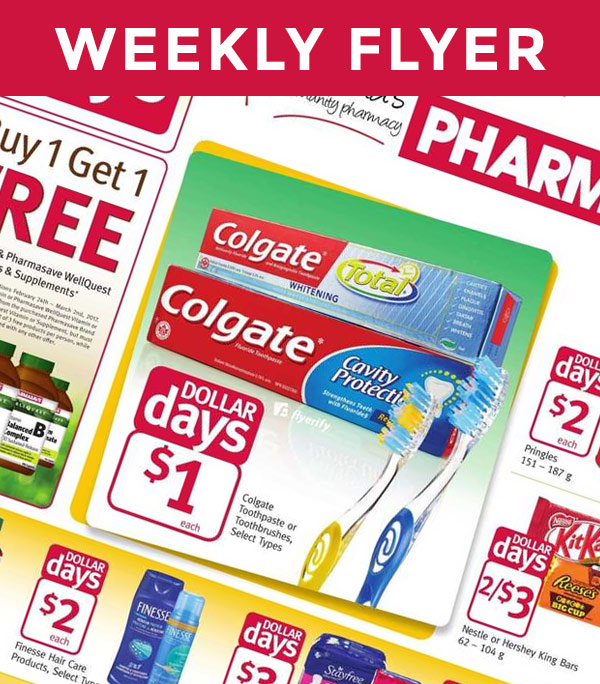
August – Nutrition and Fitness
August – Nutrition and Fitness
Nutrition and Fitness
Only about 15% of Canadians get enough regular physical activity. But it’s easier than you may think. Read on for exercise and nutrition tips to stay active and fit.
Why exercise?
Studies show that only about 15% of Canadians get enough regular physical activity, and that 65% of people are not physically active enough to maintain their heart health. Being active can help you maintain a healthy body weight and reduce your risk of certain conditions such as heart disease, high blood pressure, and diabetes. If you’re not a big fan of grueling workouts in the gym, rest assured that there are plenty of fun ways to stay fit this summer with outdoor activities. And when you’re having fun, you’re more likely to stick with an exercise plan that’s right for you! Even 30 minutes of moderate exercise each day will help improve and maintain your health.
There are many other reasons to be active this summer. Exercise can help you:
- improve your muscle tone
- relieve stress
- improve your body image
- increase your energy and concentration levels
- protect your bones
- improve your circulation
- improve your digestive health
- have fun and be social
Physical activity ideas
There are more ways than you might think for you and your family to get enough physical activity to keep healthy. Here are a few ideas:
Take a walk. Walking is one of the simplest activities to get the ball rolling. All you need is a comfortable pair of shoes and a pleasant walking trail. Take a walk after lunch and dinner, or get off one bus stop early on your way to work.
Make a play for it. You might have flown a kite or thrown a Frisbee as a kid – why not now? Once in the park, you might see other activities that encourage you and your family to have fun exercising.
Start a family health club. Gather your family together one evening or weekend and make up a list of activities that everyone can enjoy. Put your list on the fridge with a calendar and plan for evenings when you can try a new activity. For example, your list might include softball, cycling, tennis, or basketball. A list of fun activities will be more beneficial to your family than a list of favourite TV shows.
Support the sports. Most sports activities increase your physical fitness, contribute to heart and bone health, and help you maintain a healthy body weight. And you don’t need to be a professional athlete to benefit from team or individual sports. Participating in individual or team recreational sports, such as baseball, tennis, soccer, cycling, swimming, or running, is an excellent way to increase your level of physical activity and fitness. Team sports are also a great way to meet others who are motivated to stay fit. Visit your closest community recreational centre or sports club for more information on organized individual or team sports.
Just the basics. Scientific evidence suggests that even low-intensity, general lifestyle activities have health benefits. You can stay healthy with activities such as:
- gardening and yard work
- leisure activities such as golf, tennis, or bowling
- housework
- dancing
- walking up stairs
What to eat before, during, and after a workout
Everybody knows that you need to eat the right things if you want to stay healthy and fit. But what are the “right things”? What does your body need in order to help you stay active?
One important answer is glucose. Glucose is the fuel your body needs, especially at the beginning of exercise. Even after you’ve been exercising for a while and your muscles are getting energy from fat, glucose is still important. It’s like gasoline for your body – so keep your gas tank full.
Where do you get glucose? You get it from carbohydrates. Maintain a well-balanced diet and choose lots of fruit and vegetables to go with your grains (pasta, rice, bread, cereal). And remember to eat the right things at the right times – food takes time to digest.
Water is another part of eating healthy. You need water to keep the nutrients circulating in your body and to clear out the waste. And you sweat off a lot of water when you exercise (even if you’re swimming). You can get your water from milk, juice, sports drinks – or plain old water.
Here’s what to eat and drink before, during and after exercise:
More than 3 hours before exercising
- Eat a regular meal if you want, since you’ll have enough time to digest. Balance a serving of lean protein with a good amount of carbohydrates – rice, spaghetti or bread – plus fruit and vegetables and water, milk or juice.
- Drink regular amounts of fluid – a glass or two every hour.
Just before exercising
- Stick with light, easy-to-digest snacks. Go for fruits and fruit snacks, perhaps with a few light carbohydrates (graham crackers, cereal).
- Keep yourself well hydrated so you’ll have enough water circulating in your system (but not so much that you feel overfull or will have to keep stopping for restroom breaks).
During exercise
- Drink an average of a cup of liquid every 15 to 20 minutes.
- Water will be fine for short exercise periods, especially if you’ve eaten enough in advance. For exercise lasting more than an hour, you may want to keep your energy up with sports drinks or juice mixed with water.
After exercising
- If you will be exercising again in the next 24 hours, eat some carbohydrate-rich foods within a half hour of your workout.
- If you will be exercising again in a day or two, make sure to keep lots of carbohydrates in your diet to keep your glucose gas tank full.
See the section in this feature on “Foods to fuel fitness” for more details on what to eat.
Foods to fuel fitness
How much protein?
Despite what many active people think, protein from foods like meat, chicken, eggs, or fish is not an important source of fuel for exercise. While weight lifters and long-distance runners may need a little more protein than the recreational athlete, most of us will get more than enough protein from eating regular meals and a variety of foods.
Get your vitamin C and E
Experts have suggested that being active produces harmful free radicals – particles that can damage cells and genetic material (DNA). It may be important to eat foods rich in antioxidants such as vitamin C and E to help repair this damage. Foods rich in these vitamins include strawberries, oranges, grapefruit, kiwi fruit, olive oil, wheat germ and nuts.
Eat iron-rich foods
Studies have found that runners, particularly female runners, may have low levels of iron. This may be because they eat less meat (which is high in iron), absorb less iron and consume fewer calories. It is important to eat enough iron-rich foods such as dried fruit, spinach, enriched cereals and low-fat meat.
Add some omega-3
Early studies suggest adding marine-sourced omega-3 fatty acids may reduce inflammation and muscle soreness, which benefits athletes and beginners alike. Omega-3-rich foods include fatty fish such as salmon, mackerel, anchovies, sardines, herring, Arctic char, and trout.
Other general nutrition tips
Here are a few simple tips for enjoying nutritious foods:
- Start your day with breakfast. Especially as you start to exercise more, you’ll need the morning fuel to be productive during and after work. Skipping breakfast will only make you hungrier throughout the day and more likely to overindulge in unhealthy foods. Eating regular, smaller meals is the best way to burn calories most efficiently.
- Keep a bowl of fresh fruit ready. Place a bowl of fruit on your kitchen table and at your desk at work.
- Pack your lunch the night before. You’ll be more likely to plan nutritious, satisfying lunches if you’re not scrambling for the nearest snack in the early morning or at work.
- Be inspired. If you enjoy cooking and eating, buy a healthy cookbook or food magazine to help you cook creative nutritious meals.
Ask Your Pharmacist
Question: My doctor says I should start exercising to lose weight and help my diabetes. Where do I start?
Answer: Scheduling regular physical activity that you enjoy is a good place to start. This can include walking, gardening, or dancing. The Canadian Diabetes Association recommends 150 minutes of moderate-vigorous exercise per week, or more simply, 30 minutes five days a week. Remember to pace yourself—you can start with 5 to 10 minutes of physical activity daily and build your endurance gradually.
Do you have a question? Speak with your Pharmasave pharmacist.
Health Tip
It’s so easy to find an excuse to put off exercise for another day. Try finding a workout buddy—it will make those excuses tougher to use. Celebrating your progress alone isn’t as much fun as it is with a partner. Your workout time will go by more quickly and you’ll likely stick with your exercise plans longer. That means better results for you both! Don’t forget to set goals for yourselves and celebrate every few weeks when you’ve reached them.
All material © 1996-2013 MediResource Inc. Terms and conditions of use. The contents herein are for informational purposes only. Always seek the advice of your physician or other qualified health provider with any questions you may have regarding a medical condition.








